Steel Commercial Buildings: A Top Choice for Skagit Commercial Builders
When it comes to putting up modern buildings—especially large commercial ones—choosing the right construction material is a big deal. You need something strong, durable, and cost-effective. That’s where steel commercial buildings really shine. They’ve become a top choice for projects of all sizes because they just make sense. From faster construction timelines to unmatched structural integrity, steel offers a range of benefits that are hard to ignore. At the Skagit/Island Counties Builders Association (SICBA), we’ve seen firsthand how Skagit commercial builders are embracing steel to meet the demands of today’s construction environment. Let’s take a closer look at why they’re such a smart pick for modern projects.
Key Takeaways
- Commercial building steel is super strong and lasts a long time.
- Building with commercial building steel can make projects go a lot faster.
- Using commercial building steel can save you money in the long run.
- Commercial building steel lets you design all sorts of cool buildings.
- Commercial building steel is good for the environment and helps with safety.
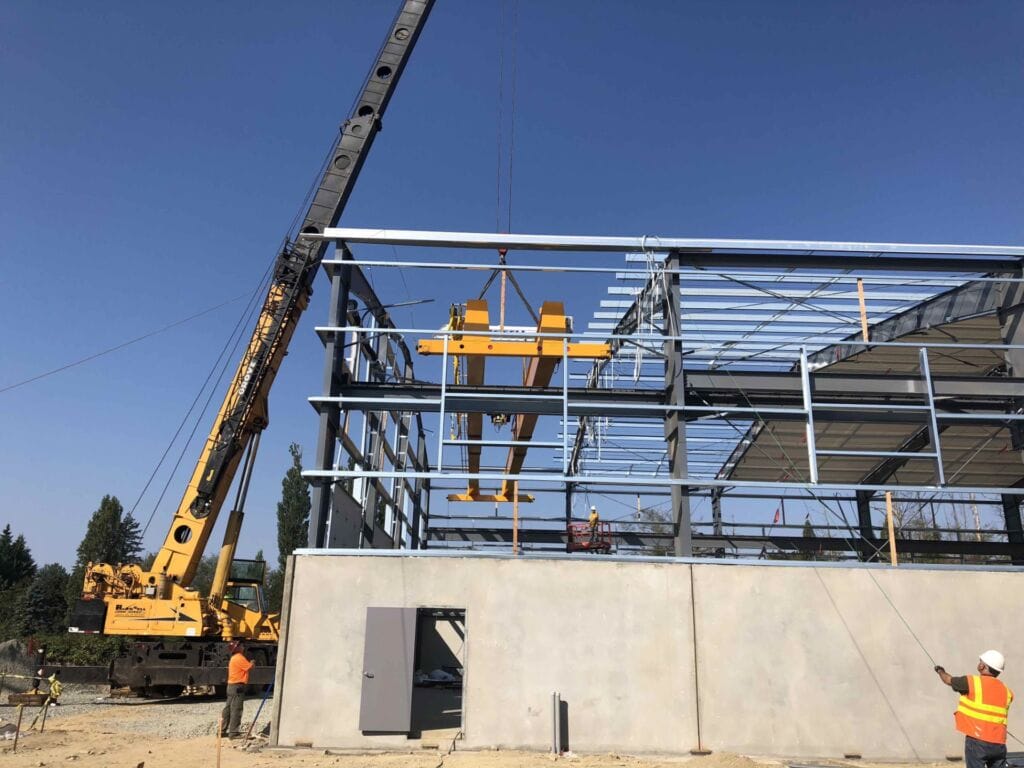
The Unmatched Strength and Durability of Steel Commercial Buildings
Steel has become a go-to material in commercial construction, and for good reason. Whether you’re putting up a warehouse, office building, or a large industrial plant, steel offers clear advantages over other materials. Our expert commercial contractors in the commercial industry at the Skagit Island Counties Builders Association have seen firsthand how choosing the right material can lead to lasting value, faster construction, and more innovative designs.
Superior Strength-to-Weight Ratio
One of the biggest pluses of structural steel is its incredible strength. It can handle really heavy loads, which is why it's used for things like skyscrapers and bridges. The strength-to-weight ratio means you get a lot of strength without adding a ton of extra weight to the structure. It's a big deal when you're trying to build something tall or that needs to span a large area.
Resistance to Environmental Factors
Steel stands up well to all sorts of weather. It doesn't shrink, rot, or get eaten by pests like some other materials. This is super important for making sure your building lasts a long time and doesn't need constant repairs. Plus, steel can be treated to resist corrosion, which is a big win if you're building near the ocean or in an area with a lot of rain.
Reduced Long-Term Maintenance Costs
Because steel is so durable, you end up saving money in the long run. You won't have to replace or repair it as often as other materials. This means lower maintenance costs and less downtime for your business. It's a smart investment that pays off over time.
Choosing steel for your commercial construction project offers clear advantages, with faster build times, long-term resilience, and design flexibility. Steel provides a practical solution that
Here's a quick look at how steel stacks up against other materials:
- Steel: High strength, durable, low maintenance.
- Concrete: Good strength, but can crack and require more maintenance.
- Wood: Lower strength, susceptible to rot and pests.
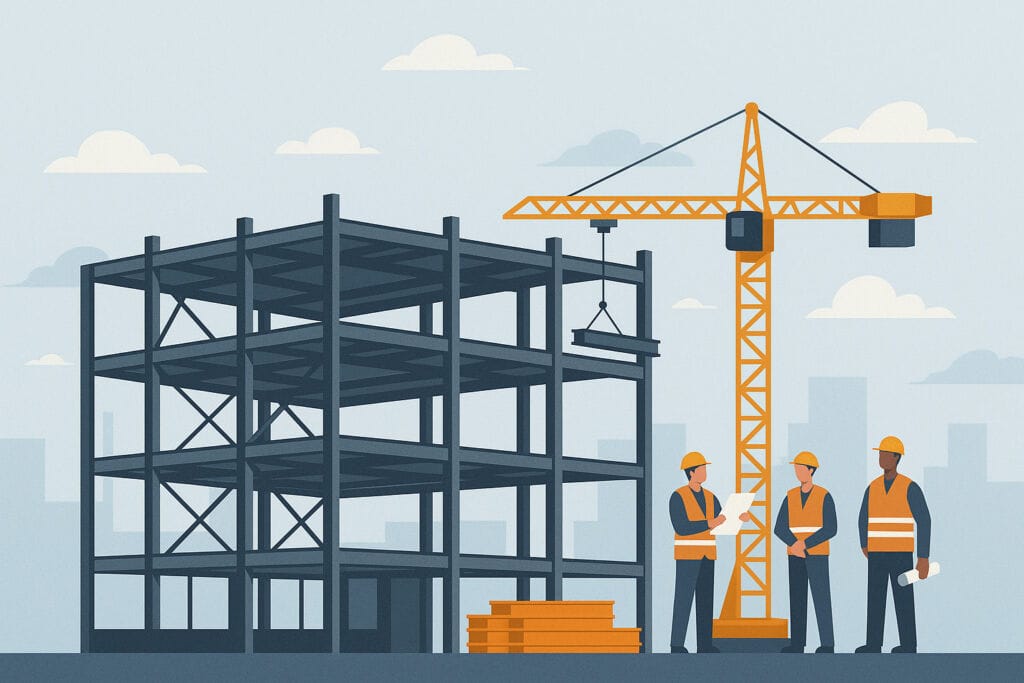
Faster Construction Timelines with Steel Commercial Buildings
Time is a critical factor in any construction project. Using commercial building steel can significantly speed things up, letting you open your doors sooner and start generating revenue faster. Steel's properties and modern construction techniques combine to make for a streamlined building process.
Pre-Engineered and Off-Site Fabrication
One of the biggest advantages of steel is the ability to pre-engineer and fabricate components off-site. This means that while the foundation is being prepared, the steel structure is already being manufactured in a controlled environment. This prefabrication advantage reduces the amount of on-site work, leading to faster assembly.
Because much of the work is done off-site, the need for on-site labor is greatly reduced. This not only saves on labor costs but also minimizes potential delays caused by weather or other unforeseen issues. With fewer workers needed on-site, coordination becomes simpler, and the risk of errors decreases.
Predictable Project Schedules
Steel construction offers more predictable project schedules compared to traditional methods. The precision of pre-engineered components and the reduced reliance on weather-dependent on-site work contribute to a more reliable timeline. This predictability allows for better planning and resource allocation, ensuring that projects are completed on time and within budget.
"Using steel in commercial construction provides a clear advantage in terms of speed. The combination of pre-engineered components, reduced on-site labor, and predictable schedules makes it a smart choice for businesses looking to minimize downtime and maximize their return on investment."

Cost-Saving Advantages of Steel Commercial Buildings
Steel construction isn't just about strength and speed; it's also about saving money. The initial cost might seem comparable to other materials, but when you look at the whole picture, steel often comes out ahead. Let's break down how steel can be a budget-friendly choice for your next commercial project.
Savings Throughout the Project Lifecycle
Steel's cost-effectiveness isn't just about the initial price tag. It's about the long-term savings you'll see throughout the building's life. From reduced construction time to lower maintenance costs, steel offers a range of financial benefits. For example, steel's resistance to pests and fire can lead to significant savings on insurance premiums. Plus, the durability of steel means fewer repairs and replacements down the road. It's an investment that keeps paying off. According to the National Institute of Building Sciences, every dollar invested in resilience measures—which include robust commercial building materials like steel—can deliver up to $13 in avoided losses, underscoring the economic benefits of durable design.
Accurate Estimates and Budget Control
One of the biggest headaches in construction is unexpected costs. With steel, you can often get more accurate estimates upfront. This is because steel components are frequently pre-fabricated in a controlled environment. This reduces the chances of on-site errors and delays that can drive up costs. The modular nature of steel also contributes to better budget control. You know what you're getting, and you can plan accordingly. This predictability is a huge advantage when managing a construction budget. Steel structures are often pre-engineered and delivered ready for assembly.
Lower Insurance Premiums
Commercial building owners know that insurance costs can be a significant expense. Steel's inherent properties can help lower those premiums. Because steel is non-combustible, it reduces the risk of fire damage, which can translate into lower insurance rates. Additionally, steel's resistance to pests like termites can further reduce your insurance costs. It's a win-win situation: you get a safer building and save money on insurance.
Choosing steel can lead to significant savings over the lifespan of a building. The reduced construction time, lower maintenance costs, and potential for lower insurance premiums all contribute to a more cost-effective solution. It's about making a smart investment that pays off in the long run.
Why Pre-Engineered Steel Buildings Offer Superior Design Flexibility
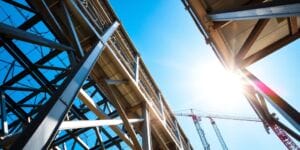
Steel isn't just about strength; it's also about adaptability. You might be surprised at how much freedom it gives you in designing your commercial space. It's not just boxes anymore!
Versatile Architectural Possibilities
Steel lets architects and designers really stretch their creative muscles. The inherent strength of steel allows for unique and innovative designs that might be impossible with other materials. Think curved roofs, soaring ceilings, and dramatic angles. It opens up a world of possibilities for creating a building that truly stands out. Steel's design flexibility is a major plus.
Accommodating Large Open Floor Plans
One of the biggest advantages of steel is its ability to create large, column-free spaces. This is huge for businesses that need flexible layouts, like retail stores, warehouses, or even modern offices. No more annoying columns getting in the way of your workflow! With steel, you can easily reconfigure your space as your needs change.
Ease of Future Expansion and Modification
Businesses evolve, and buildings need to keep up. Steel makes it relatively easy to expand or modify your commercial space down the road. Adding a new wing, reconfiguring the interior, or even adding a second story is much simpler with a steel frame. It's all about future-proofing your investment.
Steel's modular nature means additions and alterations can be integrated with minimal disruption to existing operations. This is a huge benefit for businesses that can't afford to shut down for extended periods during construction.
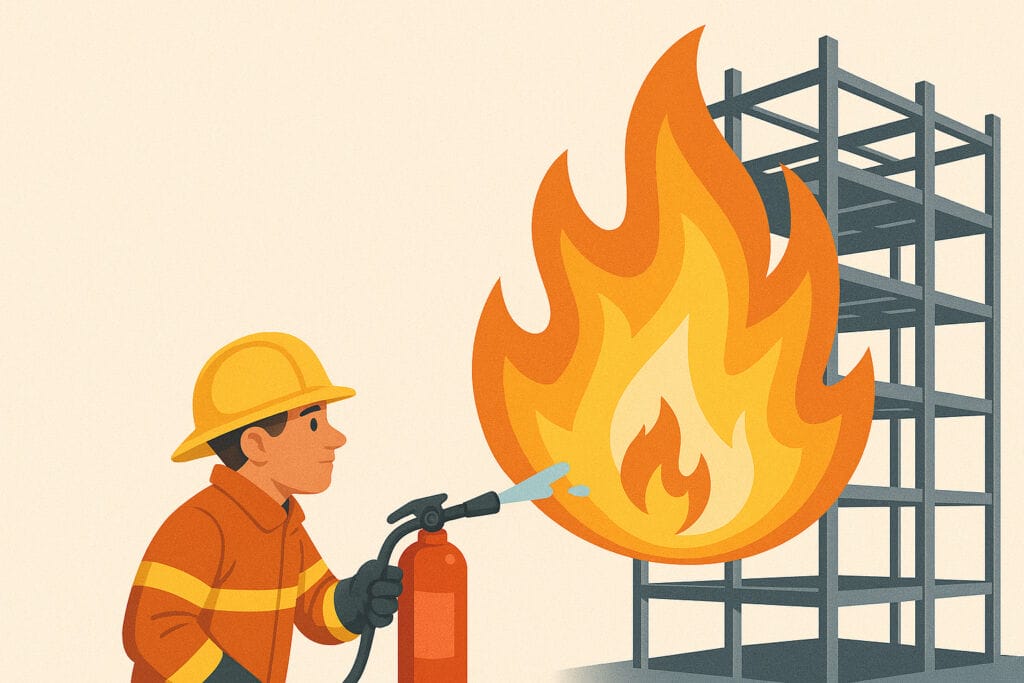
How Steel Commercial Buildings Improve Fire Safety and Resilience
Non-Combustible Material Properties
When it comes to commercial construction, fire safety is a huge deal. Steel is naturally non-combustible, which means it won't catch fire or contribute to the spread of flames. This is a major advantage over materials like wood, which can easily fuel a fire. Using steel frames can really boost the overall safety of a building.
Meeting Stringent Fire Code Requirements
Commercial buildings have to meet strict fire codes, and steel can help you do that. Steel can be used with fire-rated assemblies to meet or even exceed these requirements. This gives extra protection to the people inside and the stuff they own. Plus, it can lead to lower insurance costs, which is always a good thing. Fire-resistant steel is a great choice for commercial projects.
Increased Occupant and Asset Protection
Using steel in construction can significantly increase the safety of everyone in the building and protect valuable assets. Here's how:
- Steel doesn't burn, so it won't add fuel to a fire.
- It can help contain a fire, giving people more time to escape.
- Steel structures are less likely to collapse in a fire, protecting both people and property.
Steel's inherent fire resistance provides a critical layer of safety, reducing the risk of fire-related injuries and property damage. This makes it a smart choice for any commercial building where safety is a top priority.
Sustainability Benefits of Steel Commercial Buildings
These days, everyone's thinking about being more eco-friendly, and that includes construction. Steel is actually a really good choice if you're trying to go green. It's not just about feeling good; it can also save you money in the long run.
High Recycled Content and Recyclability
Steel is one of the most recycled materials on the planet. A lot of the steel used in new construction is made from recycled stuff, and when the building eventually gets torn down, that steel can be recycled again. It's a closed-loop system, which is pretty cool. The recyclability rate is very high, often exceeding 80%.
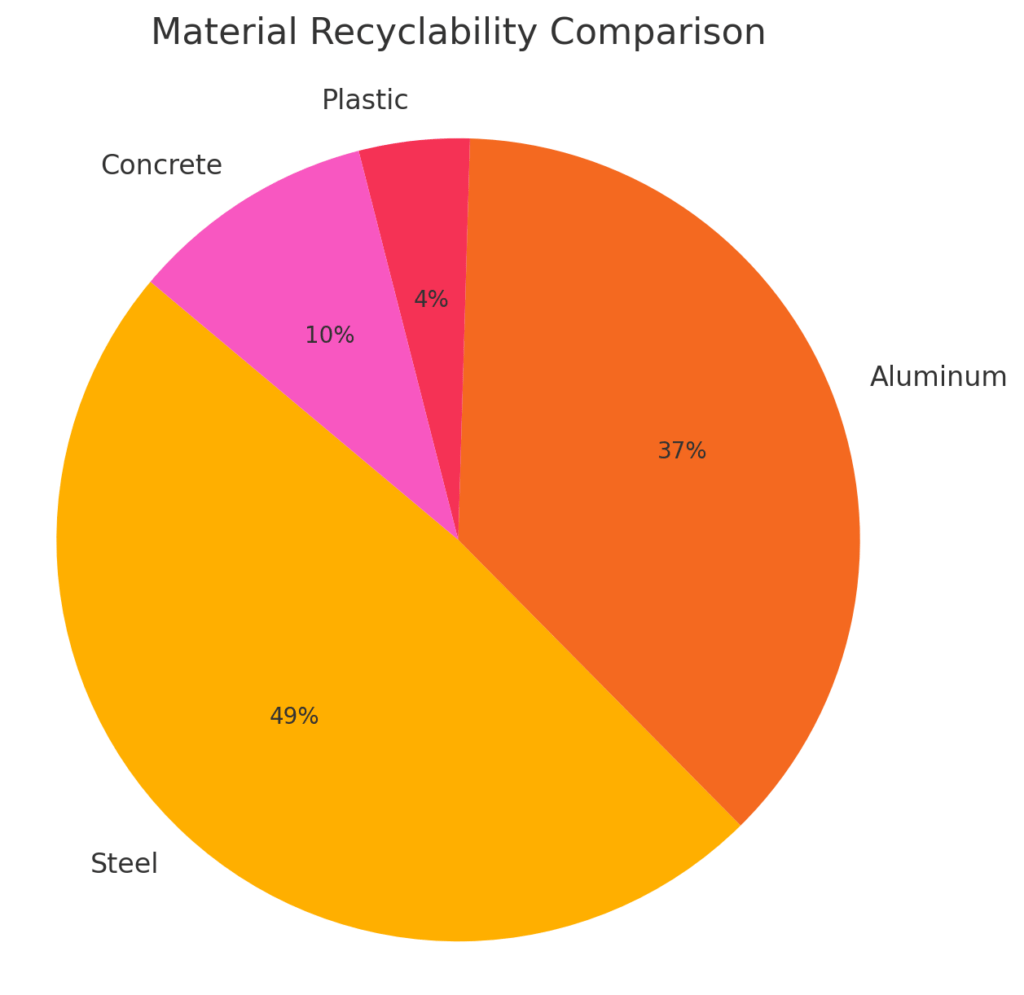
Reduced Construction Waste
Using steel can seriously cut down on waste at the construction site. Because steel components are often pre-fabricated off-site, there's less cutting and fitting that needs to happen in place. This means less scrap ends up in the dumpster. Plus, steel is durable, so you're less likely to have to replace damaged materials during the build.
Energy Efficiency in Building Operations
Steel can also help make a building more energy-efficient once it's up and running. Steel framing allows for better insulation, which can reduce heating and cooling costs. Plus, you can use steel to create designs that maximize natural light, cutting down on the need for artificial lighting.
Choosing steel supports your sustainability goals and may help in meeting LEED or other green building certifications. Its long lifespan also means less material replacement over time, reducing your environmental footprint.
Sustainability Benefits of Steel Commercial Buildings
Consistent Manufacturing Standards
Steel components for commercial buildings are made with consistent manufacturing standards. This means each piece is made to the same exact measurements and specifications. Precision metal fabrication services are crucial. This consistency reduces the chance of errors during construction and helps make sure the final building meets performance and safety standards. It's way better than using materials like wood, which can have knots or change size because of moisture.
Reduced On-Site Errors
Using steel in construction can really cut down on mistakes made at the building site. Because steel parts are often pre-made in a factory, they fit together more easily and accurately. This pre-fabrication process means less cutting, welding, and adjusting needs to happen on-site, which lowers the risk of things going wrong. Plus, it speeds up the whole building process.
Meeting High Performance and Safety Standards
Steel construction helps buildings meet tough performance and safety rules. Steel is strong and doesn't burn, so it's a great choice for making buildings that need to withstand a lot of stress or resist fire.
Steel's strength and fire resistance are key to meeting safety standards. It's a reliable material that gives building owners and occupants peace of mind.
Here are some ways steel helps meet these standards:
- Strong structural support
- Fire resistance
- Ability to handle heavy loads
Conclusion
So, when you look at everything, steel really stands out for commercial buildings. It’s strong, fast to build with, and offers flexible design options that suit a wide range of needs. Plus, it’s an environmentally friendly choice—something more and more projects in Skagit County are aiming for. For Skagit commercial builders, steel just makes sense. It delivers long-lasting value, helps keep costs down over time, and meets the demands of today’s construction environment. Whether you're planning a warehouse, office, or retail space, steel is a smart, future-ready choice for commercial construction in Northwest Washington.
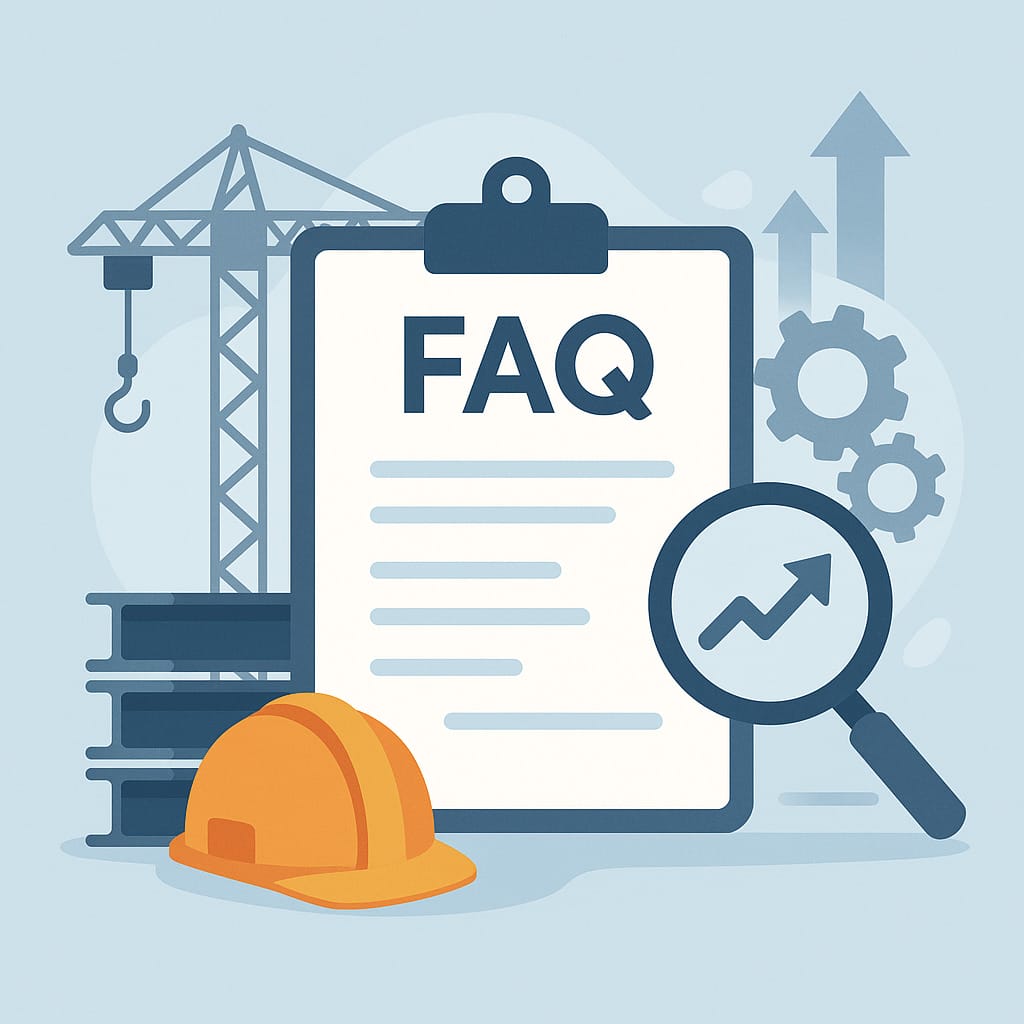
Frequently Asked Questions
What are the benefits of using steel in building?
Steel is a top choice for building because it's super strong, can be shaped in many ways, and is good for the environment. It helps buildings last a long time and makes construction projects smoother.
Which type of steel is best for commercial buildings?
For big commercial buildings, structural steel is usually the best. Hot-rolled steel is great for the main frame, and galvanized steel works well in wet spots because it doesn't rust. The best steel depends on what the building is for and how it's designed.
Does steel have any limits when it comes to custom designs or adding on later?
Steel is very flexible for design. You can make huge open rooms and easily add on to the building later if you need more space. Most limits on design come from the building plans, not from the steel itself.
Is steel a safe material for buildings
Yes, steel is very safe! It doesn't burn, which makes buildings much safer from fires. This can also help you save money on building insurance.
Does using steel make building projects go faster?
Steel buildings can be put together much faster than buildings made with other materials. This is because many steel parts are made in a factory and then brought to the site ready to be connected, which saves a lot of time.
How does steel help the environment?
Steel is a very green choice because it's made with a lot of recycled material and can be recycled again when the building is no longer needed. It also helps reduce waste during construction.
Looking for a Skagit or Island Pro?
All contractors are registered and/or licensed, insured, and bonded.
